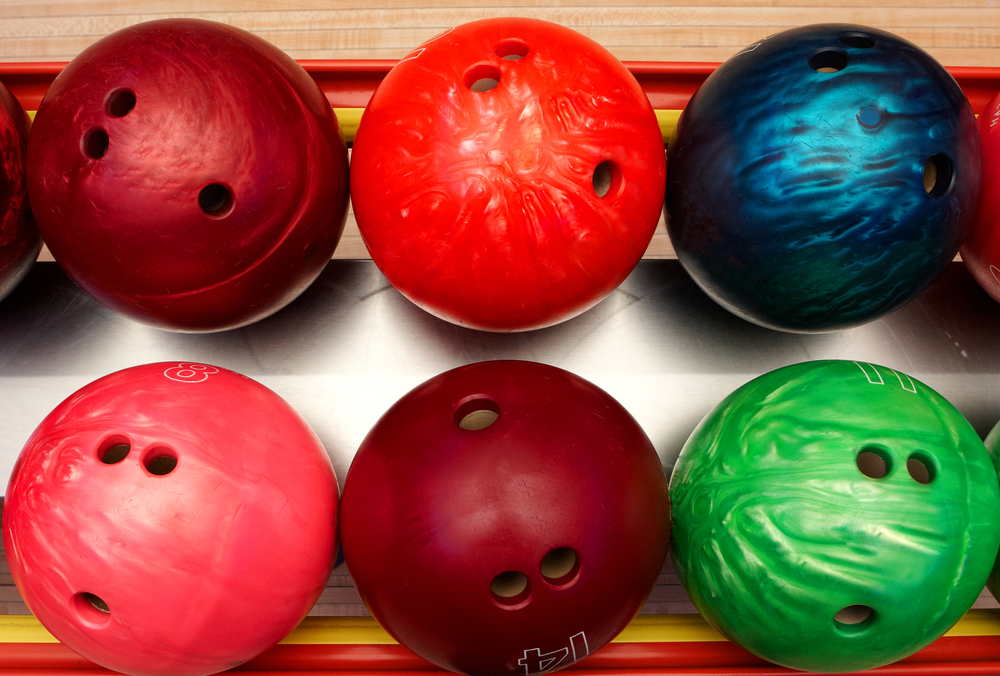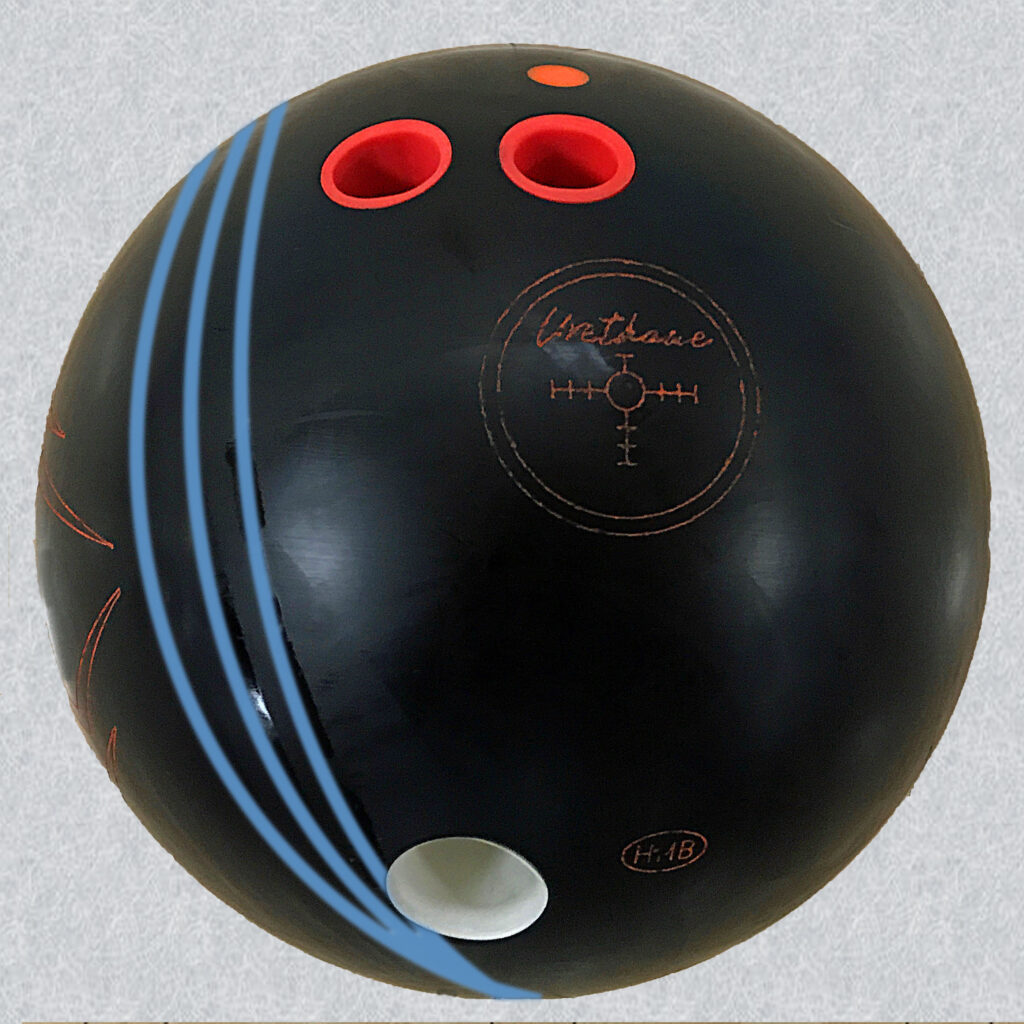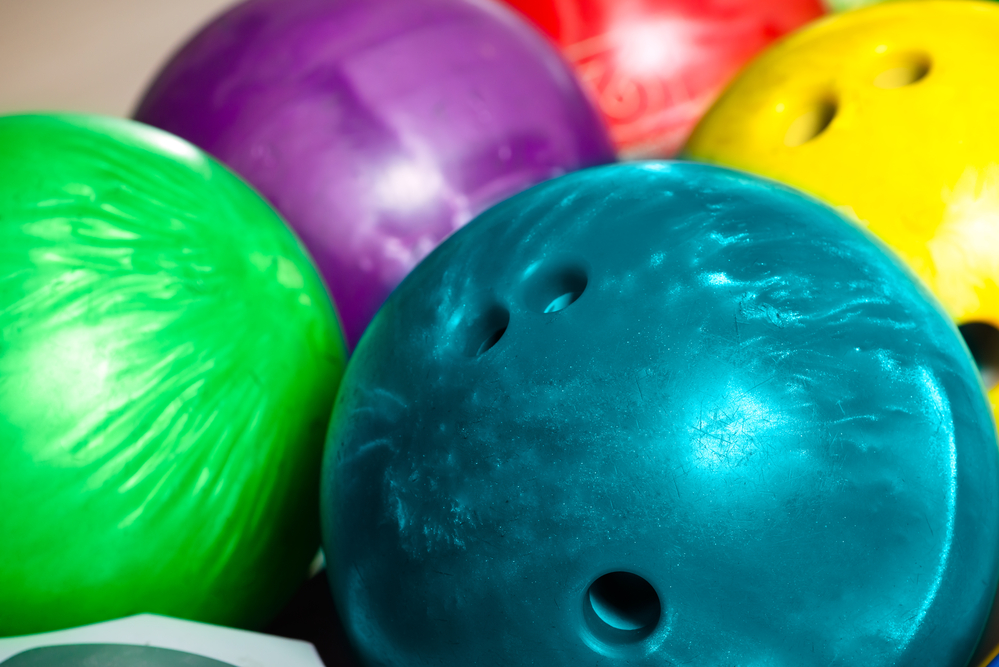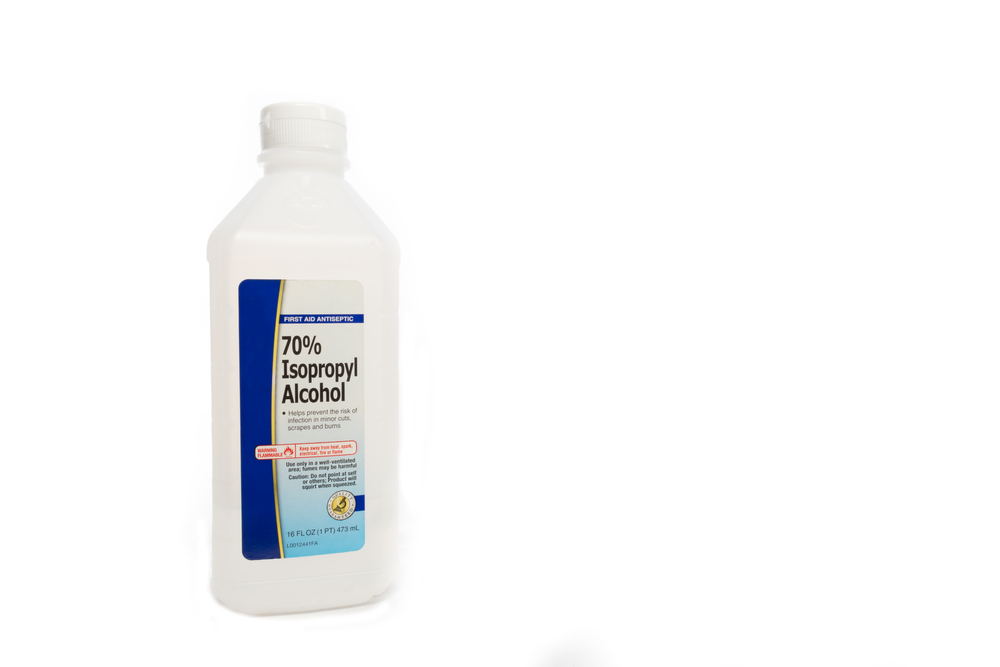
Whether or not bowling balls absorb oil is a topic of debate among bowlers.
Some say that they absorb oil and need to be cleaned regularly, while others claim that bowling balls do not absorb oil not needing to be cleaned as often.
So, what is the truth?
Let's find out!
Contents
- 1 Do Bowling Balls Absorb Oil?
- 2 Why Do Bowling Balls Absorb Oil?
- 3 Does Oil Absorption Ruin a Bowling Ball?
- 4 Which Bowling Ball Absorbs the Most Oil?
- 5 How Often Should You Remove the Oil From a Bowling Ball?
- 6 Can I Prevent My Bowling Ball From Absorbing Oil?
- 7 How to Get Oil Out of a Bowling Ball (4 Easy Solutions)
- 8 Benefits of Keeping Your Bowling Ball Clean
- 9 Can a Bowling Ball Fully Saturate With Lane Oil?
- 10 What Is a Good Bowling Ball for Medium Oil Lanes?
Do Bowling Balls Absorb Oil?

Yes, bowling balls, including the most expensive reactive-resin bowling balls, absorb oil. This is because the coverstock of a bowling ball is porous, allowing it to absorb liquids and oil from the lane.
All bowling balls do not absorb equally. The amount of oil that a bowling ball can absorb depends on the type of coverstock it has.
For example, urethane coverstocks are more resistant to oil absorption than reactive resin coverstocks.
The porosity of the coverstock also plays a role. Coverstocks with a higher porosity will be more likely to absorb oil than those with a lower porosity. (think about a sponge)
Key Takeaways
- Bowling Balls and Oil Absorption: Bowling balls, especially those with reactive-resin coverstocks, absorb oil due to their porous nature, affecting their grip and hook potential on lanes. Different coverstocks, like urethane, pearl, and plastic, have varying levels of porosity and, hence, oil absorption capabilities, with reactive resin absorbing the most.
- Impact of Oil on Bowling Ball Performance: Oil absorption can decrease a ball's hook potential and responsiveness to lane conditions. However, this does not render the ball useless. Regular cleaning can maintain performance and extend the ball's lifespan.
- Cleaning and Maintenance: Clean your bowling ball every 3 to 5 games using simple cleaners like dish soap or commercial bowling ball cleaners to remove absorbed oil and maintain optimal performance.
- Preventing Excessive Oil Absorption: While you can't completely prevent oil absorption, using lane conditioners, choosing balls with lower porosity coverstocks, and regular cleaning can reduce it. These strategies help in keeping the ball's performance consistent.
- Choosing the Right Ball for Lane Conditions: A pearl coverstock bowling ball with a high RG and differential rating for medium oil lanes is ideal for better traction and hooking potential. A ball with a solid coverstock is recommended for heavy oil lanes.
Why Do Bowling Balls Absorb Oil?
When a bowling ball is thrown down the lane, it will spin. This spinning motion generates friction between the ball and the lane. The amount of friction is what determines how much the ball will hook (or curve) as it makes its way toward the pins.
Bowling balls need to absorb oil to help them grip the lane better. By reducing friction, the ball can get a better grip on the lane and make more consistent contact with it.
If there is too much friction between the ball and the lane, the ball will not hook enough and will likely go straight into the gutter.
Therefore, adding oil to the lane helps to create this sweet spot by providing just the right amount of friction between the ball and the lane.
Does Oil Absorption Ruin a Bowling Ball?
While it is true that oil can affect the performance of a bowling ball, oil absorption is not necessarily ruinous.
Oil absorption can cause a decrease in the ball's hook potential and make the ball less responsive to lane conditions, but it will not render the ball completely useless.
With proper care and cleaning, a bowling ball can last for many years regardless of oil absorption.

Which Bowling Ball Absorbs the Most Oil?
Reactive resin bowling balls are designed to absorb more oil than other types of bowling balls.
This makes them ideal for use on oil-based lanes, as they provide better grip and traction. However, this also means that they require more frequent cleaning and maintenance.
Resin bowling balls are grouped into 3 categories:
- Plastics
- Pearls
- Solids
These materials will determine how much oil a bowling ball can absorb.
Do Pearl Bowling Balls Absorb Oil?
Pearl bowling balls are more likely to absorb oil than solid or plastic bowling balls.
This is because pearl bowling balls have a porous coverstock. The porosity of the coverstock is what determines how much oil a ball can absorb.
A higher porosity means that there are more tiny holes in the coverstock. This increases the surface area that is available to absorb oil.
Do Urethane Bowling Balls Absorb Oil?
Urethane balls are made to be resistant to oil absorption, so you can rest assured that your ball will not absorb too much oil from the lanes.
The reason for this is that urethane is a type of plastic that isn't as porous as other materials, such as pearl or solid.
Do Hybrid Bowling Balls Absorb Oil?
Hybrid bowling balls are made with a mixture of different materials. The coverstock is usually a combination of pearl and solid, meaning that they have a porous coverstock.
Do Plastic Bowling Balls Absorb Oil?
No, plastic bowling balls do not absorb too much oil. They are made with a type of plastic called polyester which is not as porous as other materials, such as pearl or solid.
This means that it has a smaller surface area that is available to absorb oil. As a result, plastic bowling balls do not absorb as much oil as other types of bowling balls.
| Bowling Ball Type | Coverstock Material | Oil Absorption Level | Maintenance Frequency | Ideal Lane Condition |
|---|---|---|---|---|
| Reactive | Reactive Resin | High | Frequent | Oily |
| Pearl | Pearlized | Moderate to High | Moderate | Medium Oil |
| Urethane | Urethane | Low | Less Frequent | Dry to Medium Oil |
| Plastic | Polyester | Very Low | Least Frequent | Dry |
How Often Should You Remove the Oil From a Bowling Ball?
It is important to clean your bowling ball regularly every 3 to 5 games in order to remove the oil that has been absorbed into the coverstock.
You can use a simple household cleaner, such as dish soap, to clean your ball or buy commercial cleaners that are specifically designed for cleaning bowling balls.
Can I Prevent My Bowling Ball From Absorbing Oil?
You cannot prevent a bowling ball from absorbing oil when you hit the lanes but there are a few things that you can do to reduce the amount of oil that your bowling ball absorbs.
- One thing you can do is use a lane conditioner. Lane conditioners help create a barrier between the ball and the lane surface, reducing friction and preventing the ball from absorbing too much oil.
- You can also use a ball with a lower-porosity coverstock. A lower porosity means that there are fewer tiny holes in the coverstock, which reduces the surface area available to absorb oil.
- Finally, you can clean your ball regularly. When you clean your ball, you remove the oil that has been absorbed into the coverstock. This helps to keep your ball performing at its best.
How to Get Oil Out of a Bowling Ball (4 Easy Solutions)
If your bowling ball has absorbed too much oil, there are a few things that you can do to remove the oil.
You can use a ball spray rubbing alcohol, you can clean it using the immersion method, or go to a pro cleaner for help.
Let's quickly go through these methods.
Method 1: Using a Ball Spray
Tool, Materials, and Supplies You'll Need
- 1 cup of rubbing alcohol
- 1 cup of water
- A clean cloth
- A ball spray
Steps to Clean a Bowling Ball Using a Ball Spray
- Combine the rubbing alcohol and water in a bowl in equal parts.
- Mix well and pour into a clean spray bottle.
- Spray the solution onto the bowling ball and rub it in with a clean cloth.
- Rinse the ball well with water.
- Repeat as necessary until the ball is free of oil.
Method 2: Using Rubbing Alcohol
Tool, Materials, and Supplies You'll Need
- Rubbing alcohol
- A clean cloth
- Water

Steps to Clean a Bowling Ball Using Rubbing Alcohol
- Pour some rubbing alcohol in a bowl and mix water in the ratio 4:2.
- Dip the cloth in the solution and rub it on the ball to remove oil.
- Rinse the ball well with water.
- Repeat as necessary until the ball is free of oil.
Method 3: Immersion
Tool, Materials and Supplies You'll Need
- A clean container
- Warm water
- Tape
- Wipes or a towel
Steps to Clean a Bowling Ball Using the Immersion Method
- Fill a clean container with warm water.
- Submerge the bowling ball in the water and secure it with tape if necessary.
- Leave the ball in the water for at least 12 hours.
- Remove the ball from the water and dry it off with wipes or a towel.
- Repeat as necessary until the ball is free of oil.
Method 4: Handing Over to the Pros
It is important to take your bowling ball to a pro cleaner to remove oil because they have the tools and expertise to do a thorough job.
They will also be able to apply the right amount of pressure when cleaning the ball so that you do not damage the coverstock.
Finally, they will be able to apply a fresh coat of polish to the ball, which will help to protect it from oil absorption in the future.
Benefits of Keeping Your Bowling Ball Clean
There are many benefits to keeping your bowling ball clean, including:
- Improved performance: A clean bowling ball will have a much better chance of hooking and making strikes than a dirty one.
- Extended lifespan: A clean bowling ball will also last longer than a dirty one. This is because the oil and dirt that is on the ball can act as an abrasive, causing the coverstock to break down over time.
- Reduced wear and tear: A clean ball will not have dirt and oil that can cause it to become damaged more easily.
- A clean bowling ball will provide a better grip.
- Less oil absorption.
Can a Bowling Ball Fully Saturate With Lane Oil?
No, a bowling ball cannot be fully saturated with lane oil. This is because the lane oil is designed to be absorbed by the coverstock of the ball, not the core.
However, once the lane oil is absorbed, it will need to be cleaned off in order to improve performance and extend the lifespan of the ball.
What Is a Good Bowling Ball for Medium Oil Lanes?
The best bowling ball for medium oil lanes is one that has a pearl coverstock. This type of coverstock is designed to provide good traction on oily lanes.
It is also important to choose a ball with a high RG rating. This will help to ensure that the ball hooks when it hits the oil.
Finally, it is important to choose a ball with a high differential. This will help to ensure that the ball hooks hard when it hits the oil.
Related Articles
My Final Words
Understanding the nuances of oil absorption across different types of bowling balls, including plastic, urethane, and reactive resin, is key to enhancing your bowling game. Reactive bowling balls, particularly those with pearlized or solid coverstocks, absorb more oil compared to traditional plastic or polyurethane balls, demanding more frequent maintenance to keep the ball's surface in optimal condition.
Cleaning your bowling equipment, especially the balls, with hot and soapy water or specialized cleaners can significantly improve how the ball rolls on the bowling lane, ensuring a better grip and more controlled hook. Whether you're choosing better bowling balls for your arsenal or seeking to maintain your current gear, remember that keeping the finger holes secure and the ball surface clean will contribute to your success in the bowling game. This direct and authoritative approach to selecting and maintaining bowling gear, grounded in a deep understanding of material properties and lane conditions, will help bowlers at any level enhance their performance.
Kira Byrd, a Certified Fraud Examiner, holds a B.S. in Accounting from the University of Alabama at Birmingham. With a passion for bowling from her childhood, Kira has poured her expertise and personal experiences into creating and nurturing Bowling For Beginners. Kira's mission is to meet new bowlers where they are and guide them toward consistently achieving higher scores. With a focus on skill development and strategic techniques, she empowers readers to take control of their game and unlock their true potential.
Bowling For Beginners embodies strict editorial integrity, ensuring reliable and unbiased information. Kira's commitment to delivering valuable insights and practical strategies is reflected in every article. Here's an explanation of our editorial policy and how we get money.






